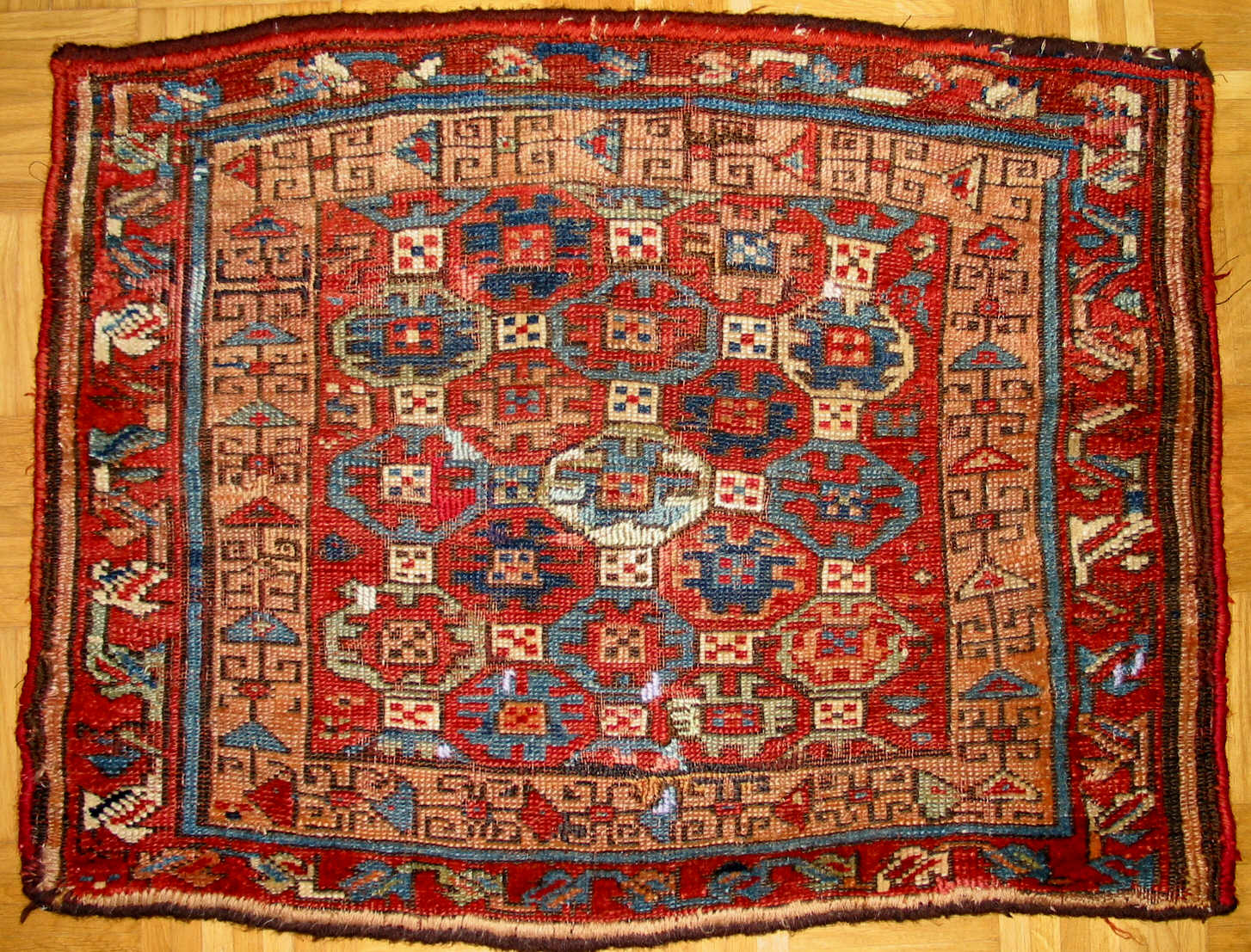This large half khorjin (saddlebag) complete with striped back was probably made before 1900 by a nomadic tribe, possibly Kurdish or Azeri, in North-West Persia or the Southern Caucasus. A very sturdy and heavy weave which has been used for transport—the pile shows wear consistent with abrasion—but the design still exerts a strong presence. (But judge for yourselves.)
In the auction where I bought the piece it was described as Yörük saddlebag. I checked with Sonny Berntsson of AKREP who knows a lot about Anatolian rugs. He thought it was not Anatolian, rather from Azerbaijan or North-West Persia.
The angular hooks and triangles in the border had made me initially think of Yörük, too. While I think Sonny is probably right, I would however not completely discount an Anatolian Yörük origin (knowing little about Yörük weavings).
The field design reminds of some from the Quchan or Sauj Bulagh areas, but I am really at a loss here. I have browsed through all my rug books plus the relevant sections at Barry's Oriental rug notes and the Jozan educational gallery but so far, I did not find any similar example. Anyone who has a clue is most welcome to come forward. (Eagleton has a few illustrations of rugs attributed to the NW Persian Kurdish Shikak tribe with vaguely similar geometric patterns, but also the scrolling flower meander borders which seem quite alien to the strict design employed here.)
The beautiful geometric repeat lattice design with a random distribution of glowing colours combines diagonally offset and vertically squashed octagons with small rectangles. (A far more common combination is one where the octagons are aligned both horizontally and vertically, leaving smaller diamond-shaped spaces between them.)
The octagons contain what seems to be a very coarse derivation of the small-pattern Holbein design found in early Anatolian (and many later) rugs (compare, for somewhat different derivative renderings, illustrations 9 and 10 in Walter B. Denny, The classical tradition in Anatolian carpets).
A German collector, Mr Gogolin, has written to me and sent me images of a bagface with very similar field and inner border design whic hin addition has a kurdish-looking palmette meander border (or whatever you choose to call it). Just compare the image (reproduced larger at the bttom of this page):
|
|
Mr Gogolin reckons his item is larger and coarser. He believes parts of this pattern originate in Southern Iran. The piece was offered to him as Kurdish while he had rather guessed it was Luri. The piece has patches at the back and the brown is corroded.
One difference between both pieces is the treatment of colour. In our piece here, there is no dominant ground colour as in Mr Gogolin's piece, where every other octagon has a red ground which lends the other octagons a foreground appearance.
Further opinions are welcome regarding the attribution. I would still think a southern Caucasian or NW Persian atribution more likely - I don't see the hooked diamonds, endless knots, trees, flowers or animals that are characterisitc for so many tribal South-Persian weaves. I went again through Jenny Housego's book Tribal rugs and found a simiar field design in plate 29 (a lattice of octagons with small squares) attrivuted to Hashtrud or Khamsa, Northwest Iran. The border in that bag is a stars border wher ethe stars are clearly derived from the serated elements in slit tapestry.
Write to me if you have simiar examples or arguments for one or the other attribution and I will add to this section.
The khorjin is quite large—it measures 29 x 29 inches (74 x 74 cm). Front and back are continuous. Symmetric knotting, not depressed. Strong white wool warps, somewhat thinner (but still strong) brown wool wefts, two shoots. A coarse weave with 5.h, 9.v = 45 kpsi. The back shows plain-woven stripes. Nice simple closing panel framed by two narrow rows of weft-float brocading.
A strong and joyous palette of all-natural dyes. The dyes are nice and saturated, a beautiful honey yellow, light blue and light yellow-green stand out. Apart from that, dark and medium indigo blue, saturated madder red, and dark brown, and a pale aubergine (more worn, perhaps corroded, than the other colours), and a tiny bit of white used in a few areas. As is consistent with natural dyes, there is no tip-fading, bleeding etc.
As already mentioned, there is uneven wear to the pile, which is low otherwise (down to the knot loops). At a few points in the centre, the foundation shows. The back is potentially unravelling where it was once cut off, should be secured; the closing panel was sewn to the back when I got it but I have opened it so it is visible. This also allowed me to wash the piece (with baby shampoo)—it was very dirty when I got it, now the colours come out nicely and the handle is more supple.
The back has three holes the largest of which has been closed wth darning (an old repair). Back and front are connected in some parts through diagonal wrapping of front and back selvages in different bands of colour (but this wrapping shows wear and has come off in other parts). The right outer border also shows wear (actually the left border in terms of the proper weave direction; the bag is shown here with the pile pointing upwards). For wall display, nothing much needs doing, but others may want to restore the bag more fully.
(For a full view, click at the small image at the top of this page)
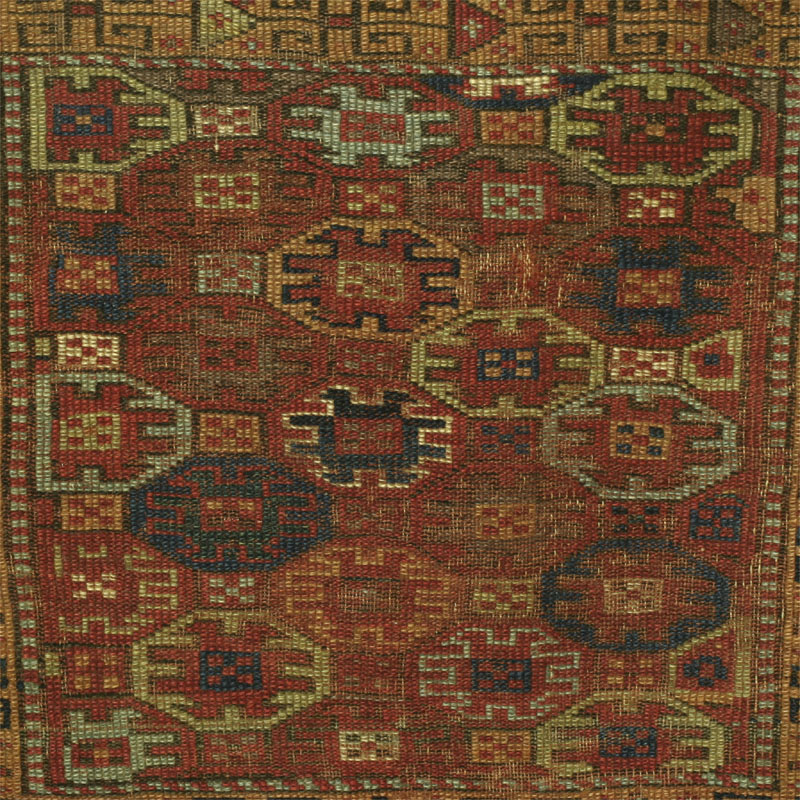
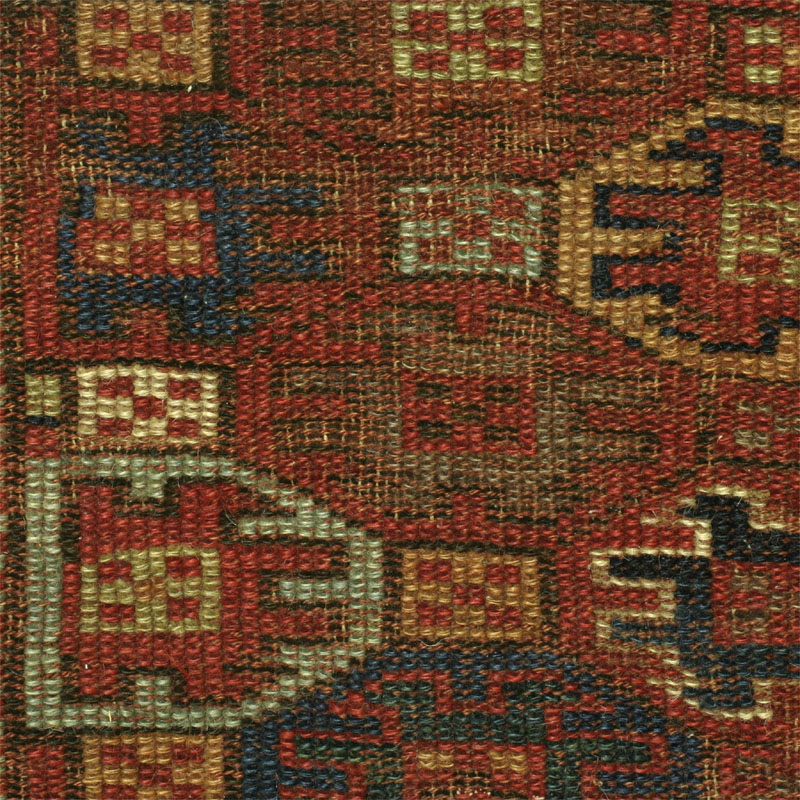
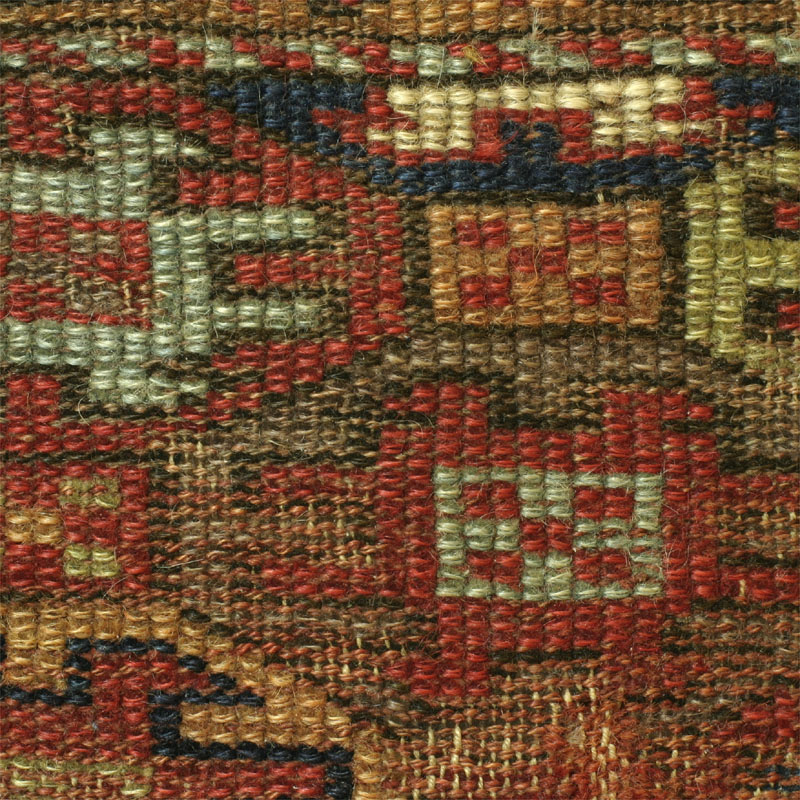
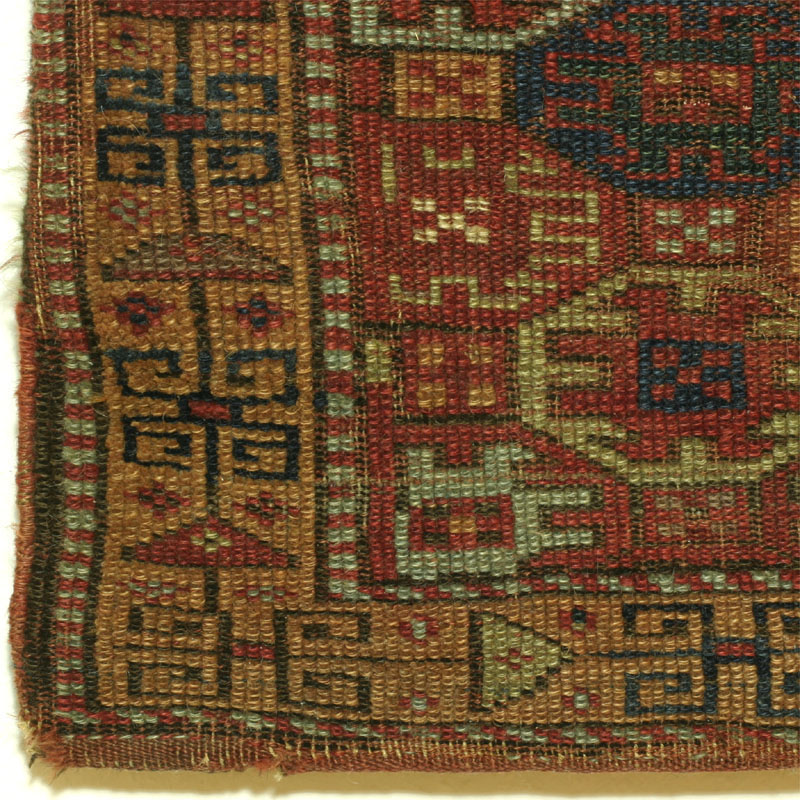
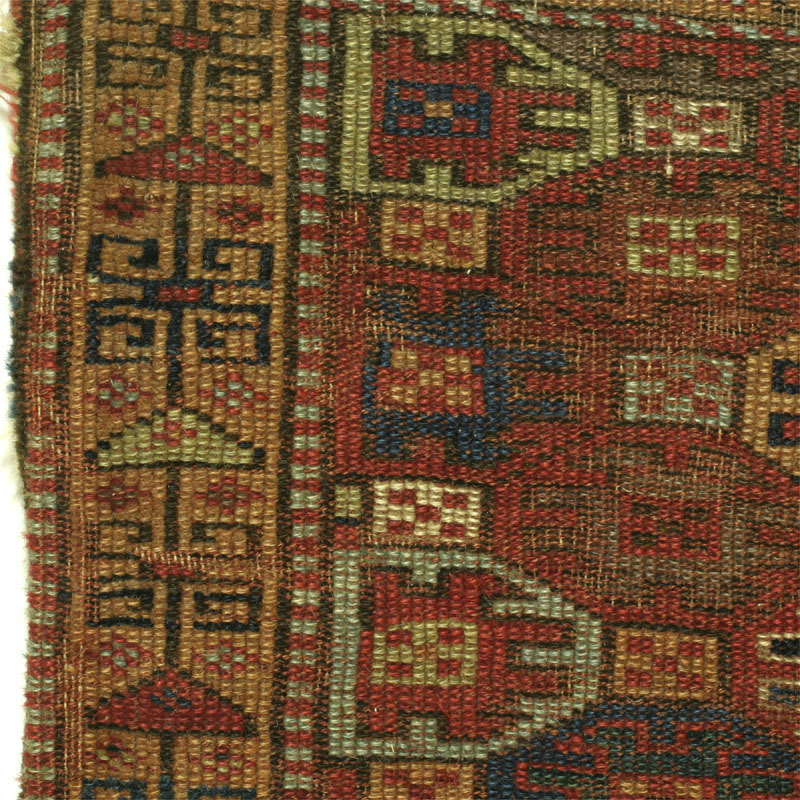
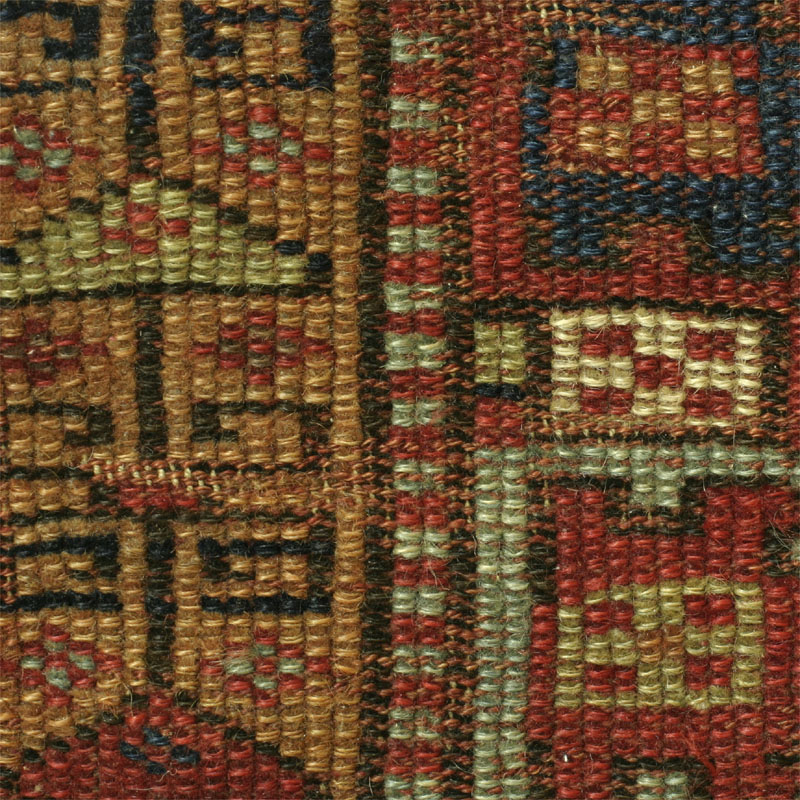
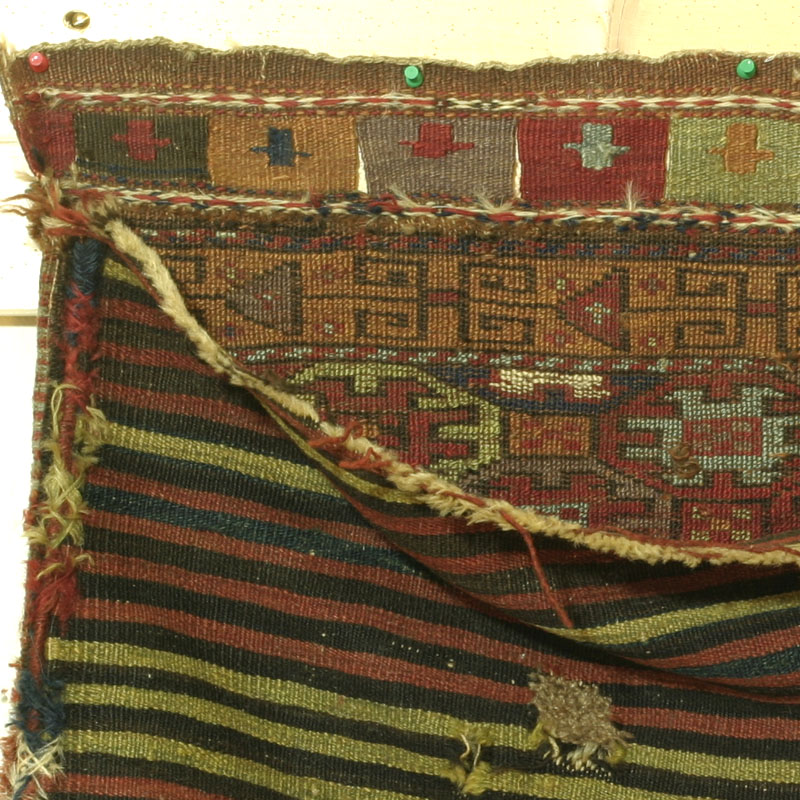
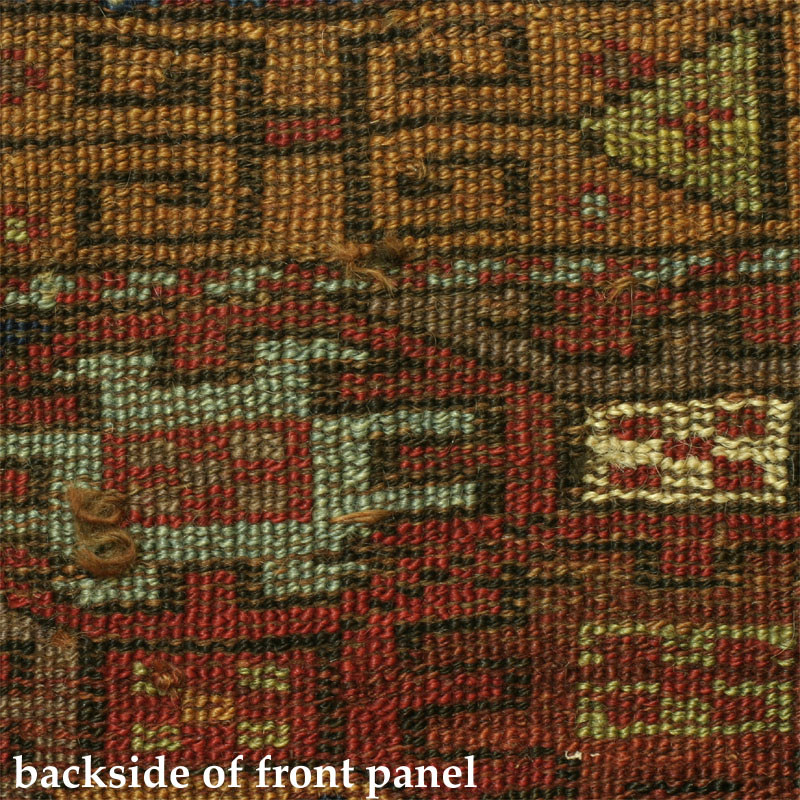
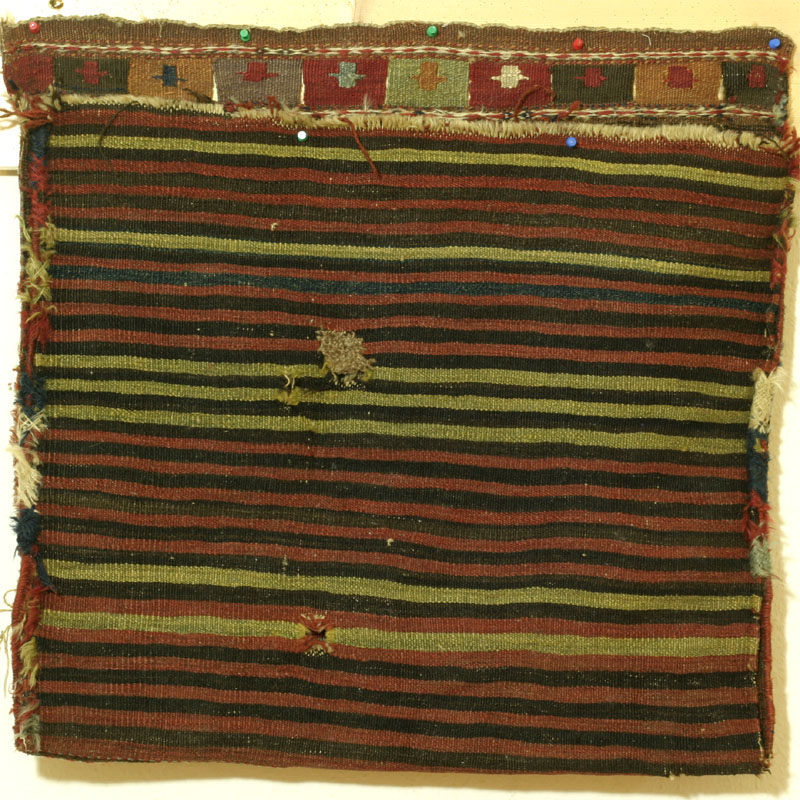
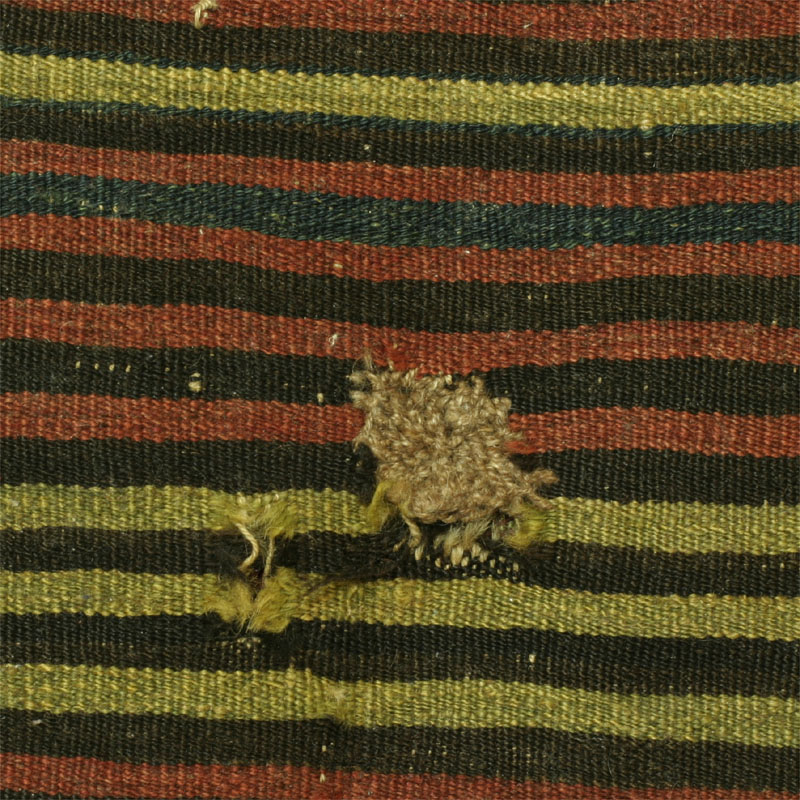

The Gogolin khorjin face (large view:)
